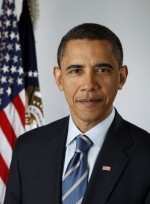Also Proposes Changes In The Way The Fees Are Collected
 While business aviation took a huge
hit in President Obama's proposal to reduce the federal deficit,
airlines did not go unscathed either ... and it's a pretty sure bet
that the fee increases imposed for airlines would be passed
directly on to the passengers.
While business aviation took a huge
hit in President Obama's proposal to reduce the federal deficit,
airlines did not go unscathed either ... and it's a pretty sure bet
that the fee increases imposed for airlines would be passed
directly on to the passengers.
In the document released Monday by the OMB outlined the
President's plan to "Live Within Our Means," the administration
proposed to "Reform the Aviation Passenger Security Fee to more
accurately reflect the costs of aviation security.
"Reflecting its commitment to keeping air travel and commerce
safe, the Administration has invested heavily in personnel,
technology, and infrastructure to mitigate the constantly-evolving
risks to aviation security. As risk changes, however, so too must
the way in which we fund our aviation security efforts. In 2001,
the Aviation and Transportation Security Act created the Aviation
Passenger Security Fee, which was to be collected to off¬set
the costs of the Transportation Security Administration’s
(TSA’s) aviation security-related activities.
"The fee, in conjunction with a separate fee charged directly to
air carriers, was put in place to ensure that the costs of aviation
security were borne by the direct beneficiaries (e.g., air
passengers, airlines) of aviation security services. The fee was
originally intended to recover the full costs of aviation security.
Since its establishment, however, the fee has been statutorily
limited to $2.50 per passenger enplanement with a maximum fee of
$5.00 per one-way trip. This recovers only 43 percent of
TSA’s aviation security costs, which have risen over the
years while the fee has remained the same.
"The Administration proposes both to raise the fee and change
the manner in which it is collected.Modeled after Chairman Paul
Ryan’s proposal in the House’s 2012 Concurrent
Resolution on the Budget, the Administration’s proposal
would:
- Replace the current “per-enplanement” fee structure
with a “per one-way trip” fee structure so that
passengers pay the fee only one time when travelling to their
destination.
- Remove the current statutory fee limit and replace it with a
statutory fee minimum of $5.00, with annual incremental increases
of 50 cents from 2013 to 2017, resulting in a fee of $7.50 in 2017
and thereafter.
- Allow the Secretary of Homeland Security to adjust the fee (to
an amount equal to or greater than the new statutory fee minimum)
through regulation when necessary.
- Set aside a specific amount of fee revenue to be returned to
the General Fund for deficit reduction over 10 years.
 "The proposed fee would collect an estimated $8.8
billion in additional fee revenue over five years, and $24.9
billion over 10 years. The Administration’s proposal would
direct $15 billion to be deposited into the General Fund for debt
reduction, with any additional revenues in excess of this amount
being applied as offsets to TSA’s discretionary
appropriations."
"The proposed fee would collect an estimated $8.8
billion in additional fee revenue over five years, and $24.9
billion over 10 years. The Administration’s proposal would
direct $15 billion to be deposited into the General Fund for debt
reduction, with any additional revenues in excess of this amount
being applied as offsets to TSA’s discretionary
appropriations."
Sounds like the Administration thinks that nearly anybody that
flies should be paying more in some way. A major lobbying effort on
behalf of business aviation is already underway, and it's fairly
likely that airlines and consumer groups will get together to
oppose this fee increase as well.
 ANN's Daily Aero-Term (05.01.24): Say Altitude
ANN's Daily Aero-Term (05.01.24): Say Altitude ANN's Daily Aero-Linx (05.01.24)
ANN's Daily Aero-Linx (05.01.24) Classic Aero-TV: Korean War Hero Twice Reborn
Classic Aero-TV: Korean War Hero Twice Reborn Airborne 04.29.24: EAA B-25 Rides, Textron 2024, G700 Deliveries
Airborne 04.29.24: EAA B-25 Rides, Textron 2024, G700 Deliveries Airborne Affordable Flyers 05.02.24: Bobby Bailey, SPRG Report Cards, Skydive!
Airborne Affordable Flyers 05.02.24: Bobby Bailey, SPRG Report Cards, Skydive!




